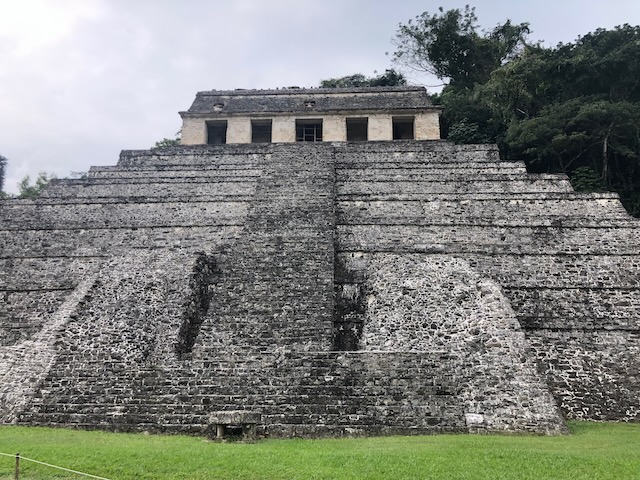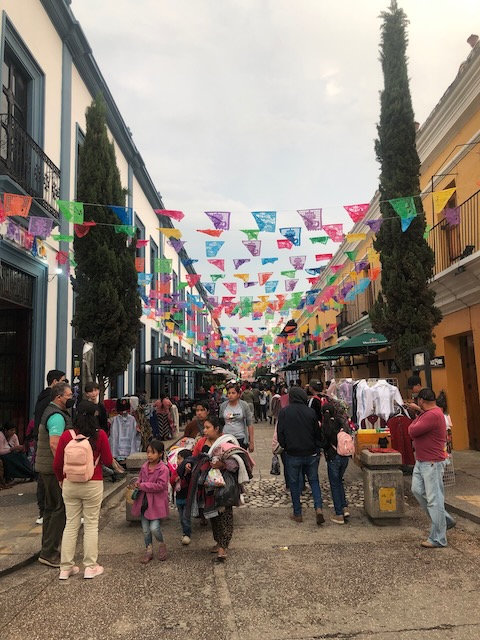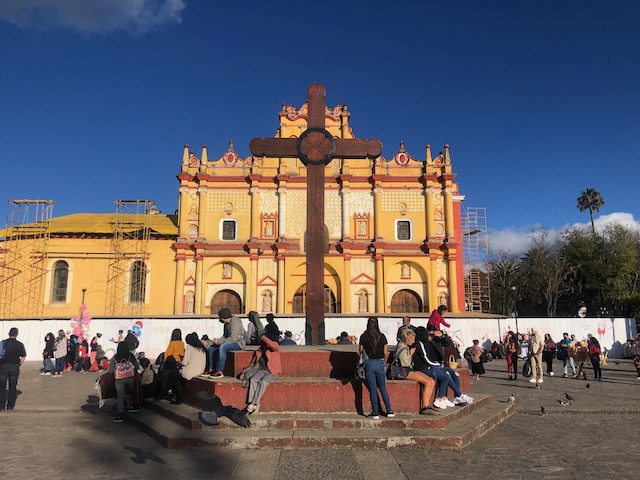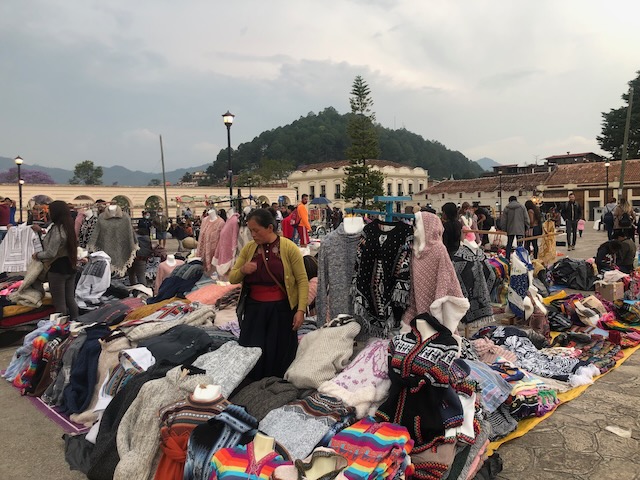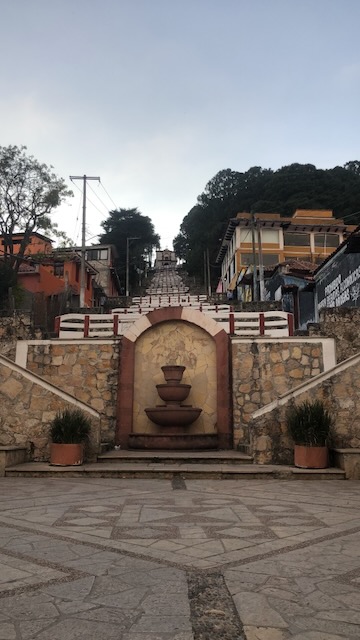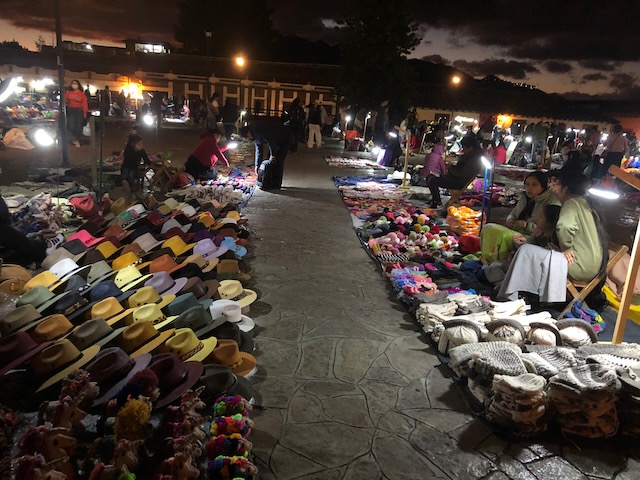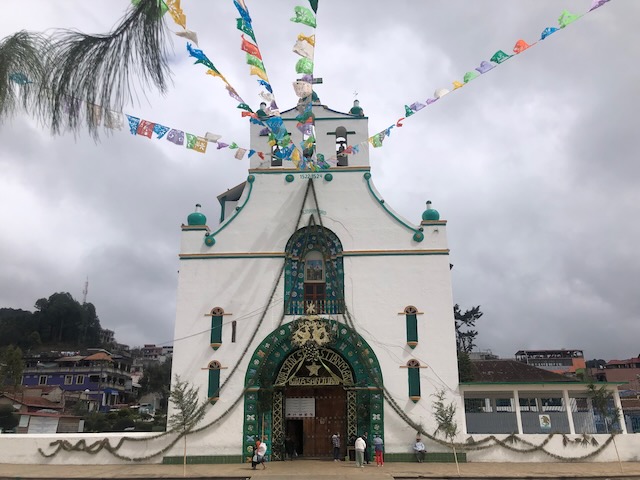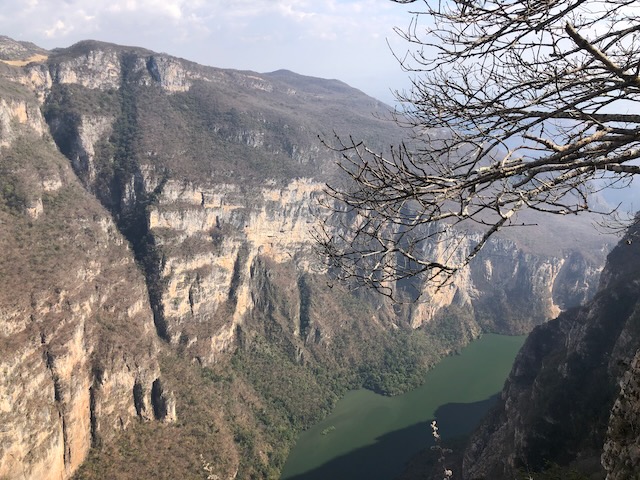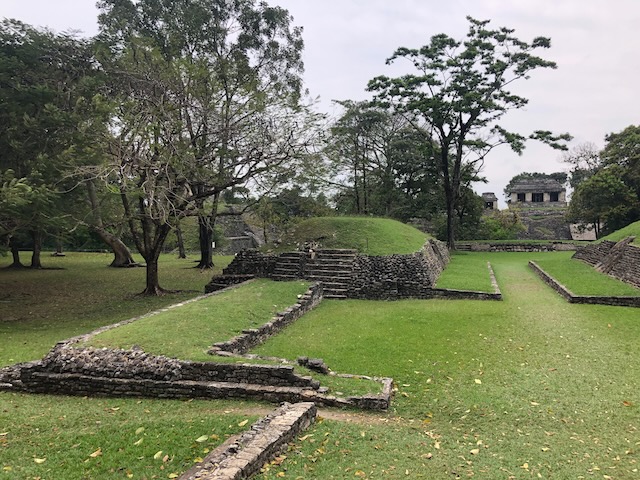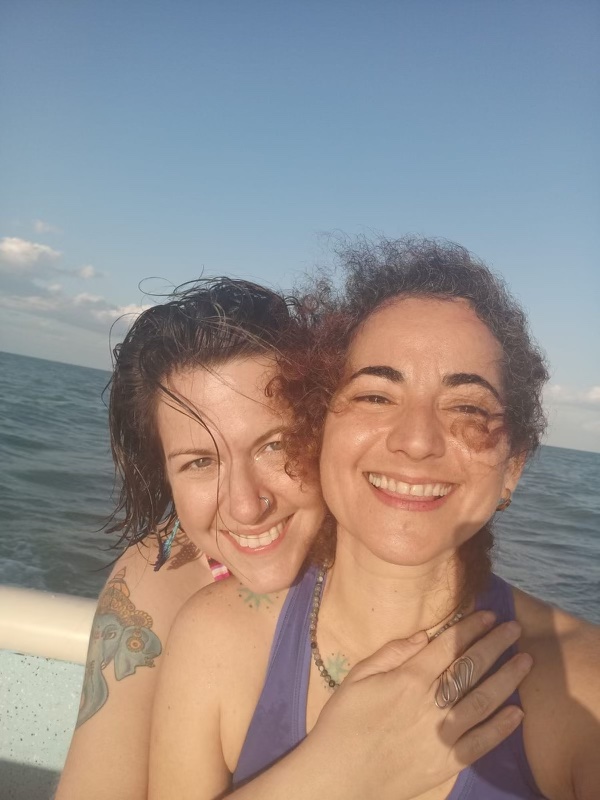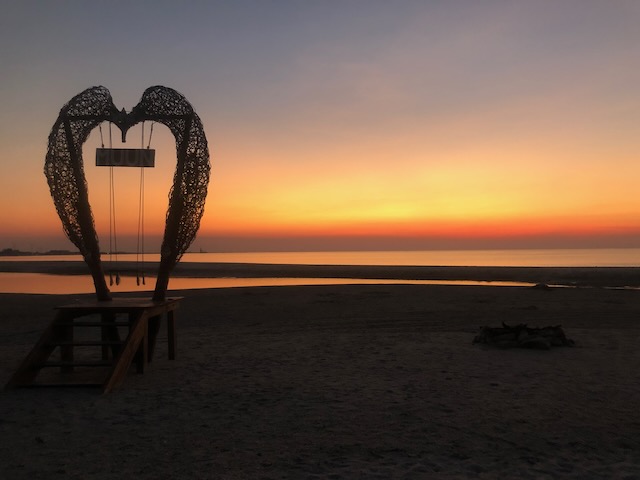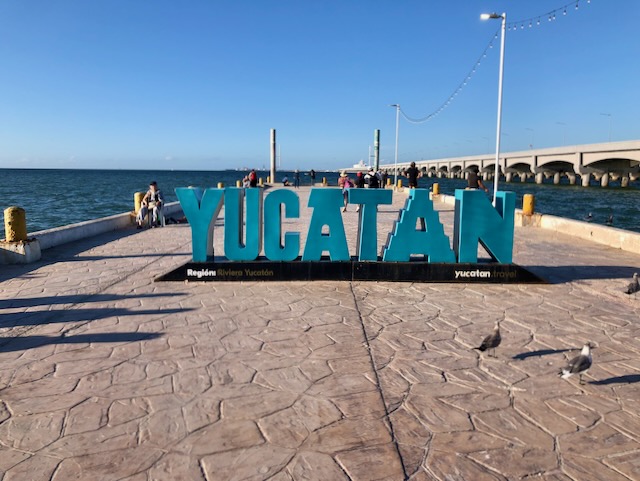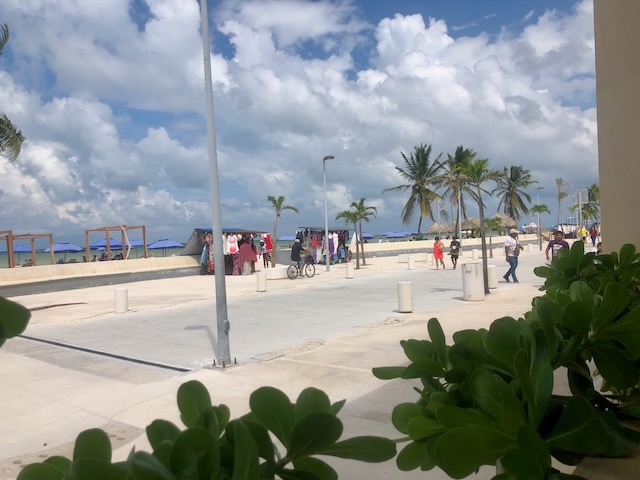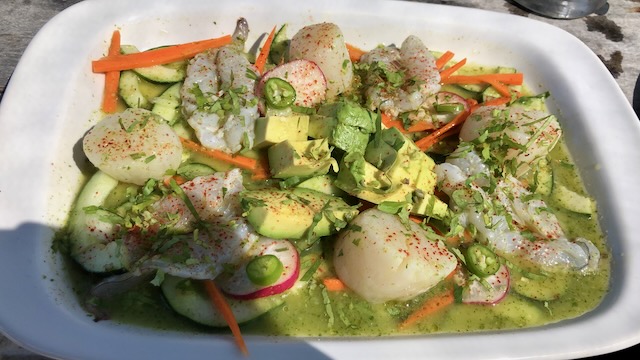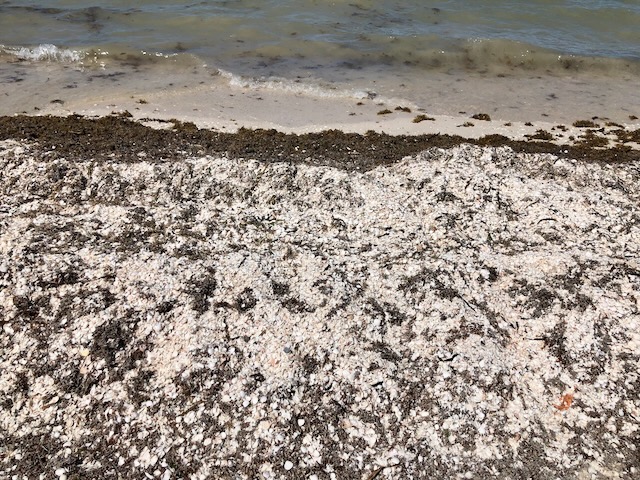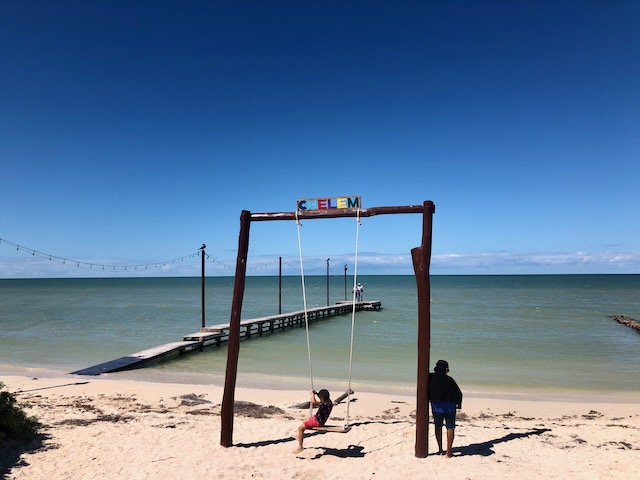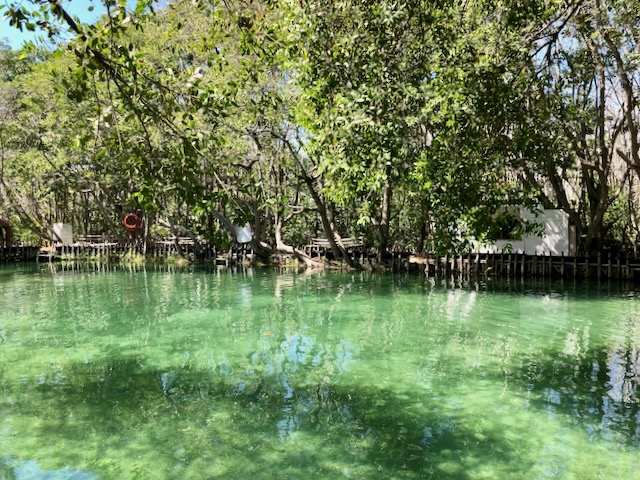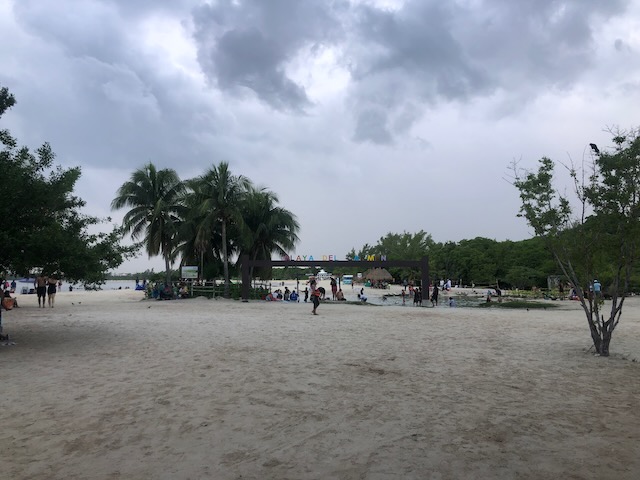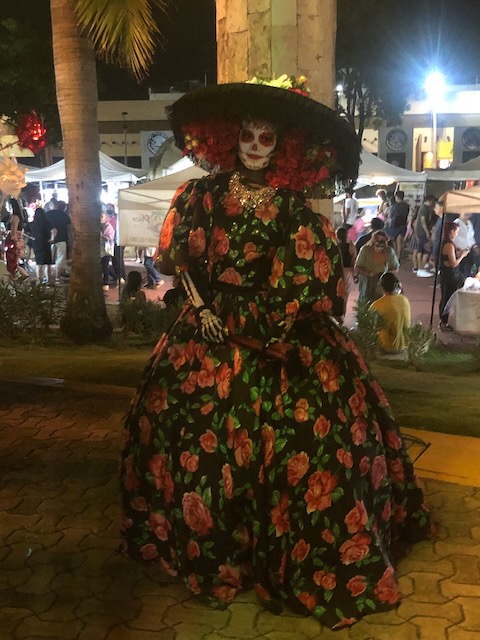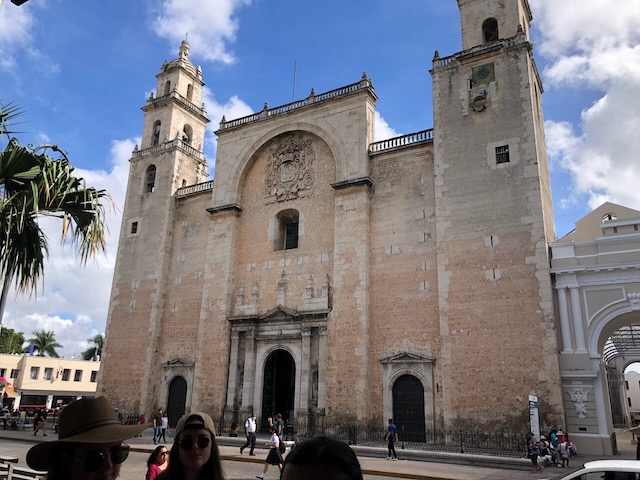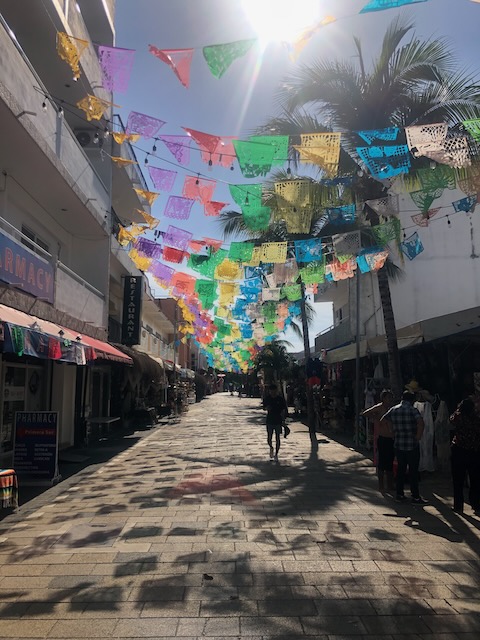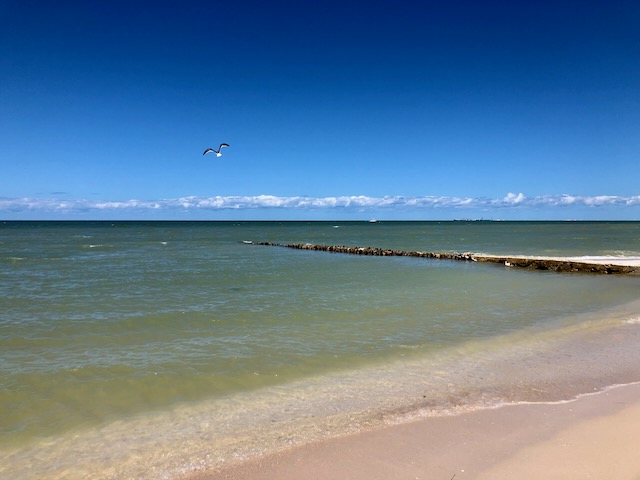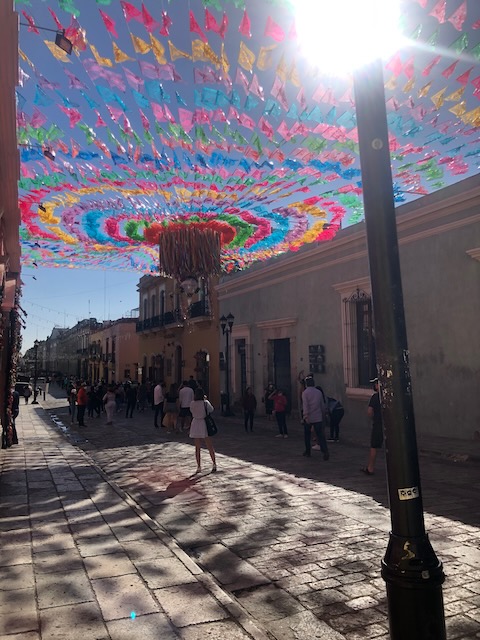
Oaxaca
Oaxaca City
In 2022, I had the opportunity to spend six months in Mexico, split into two trips. The first trip lasted four months, and I spent the first two weeks in Oaxaca, and the remainder in Chiapas.
I began my trip to Mexico on December 31, 2021, after one of the most challenging years of my life. Not only was I navigating the changes and challenges along with the rest of the world that the pandemic brought, but I also finished my master’s program, started a new business, and put my 16-year-old dog to sleep. And it all came to a head in December of 2021. My dog, who had been sick with cancer for more than a year, started to deteriorate during the fall of 2021, and I put her to sleep on December 4th. My sister had planned to accompany us, but unfortunately contracted a serious case of COVID. I was able to find a friend to be with me, but it was a very tough time for our family to say the least. Amid the grief, I managed to take final exams for my last semester of grad school and graduate on December 18th. Those first couple weeks of December are a blur, and I don’t remember a lot outside of feeling numb and beaten down. My sister and I spent Christmas in Arizona with my mom, and although it was good to be together, we had several other stressful situations thrown at us, on top of everything else.
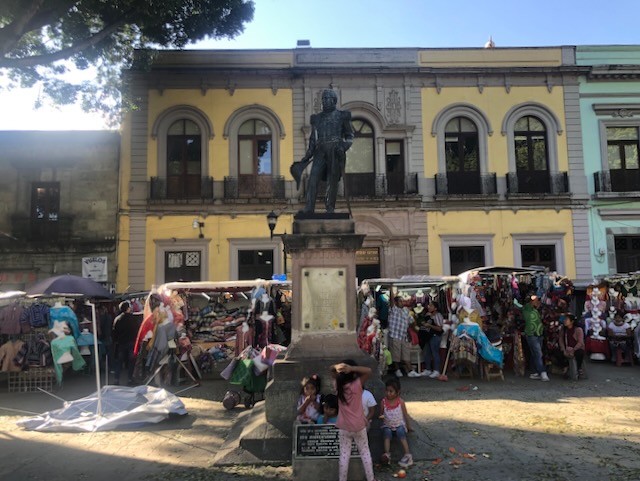
I had purchased a one-way ticket to Mexico sometime in November when I knew Audri wasn’t going to make it past the holidays. Although it was a very painful loss, it was also a new beginning for me. Audri and I were together for 14 years, and she was one of the primary things that kept me from traveling more extensively. But I finally found myself, for the first time in my adult life, completely free to travel for as long as I wished. I didn’t have Audri to care for, I wasn’t in a relationship, and I worked remotely. I was making enough money to maintain my apartment in Denver so I could have an open door to return whenever I felt ready. And so, despite the chaos, I headed to Mexico.
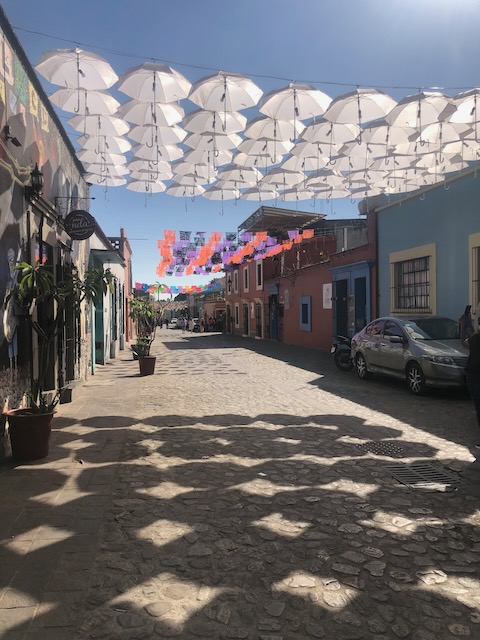
The first stop along my journey was Oaxaca City. I had planned to spend a week there, where a friend who lived in Mexico was going to meet me, and we were going to rent a car and drive down to Puerto Escondido together. But in the spirit of my luck at the time, my friend had to cancel her trip to Oaxaca because of an accident her boyfriend was in. So I spent the week in Oaxaca City solo instead, and then took a tiny jumper flight to Puerto Escondido. I really enjoyed Oaxaca City, and in hindsight wish I had stayed for longer. January is the busiest month of the year for my industry, so I spent most of the week working in my Airbnb. I got out for meals when I could and enjoyed a lot of really yummy (and affordable) vegan food and seafood. There are some beautiful and unique neighborhoods in Oaxaca City, with a lot of color and beautiful art sculptures. The vibe was happy and light, during a time when the US was filled with tension and fear. The Mexicans seemed to uphold their sunny dispositions and love for fun and parties despite the pandemic. The shift in energy was just what I needed.
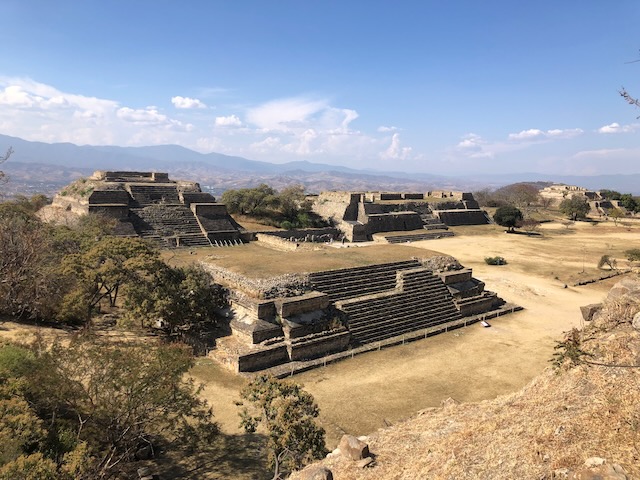
Before I headed to Puerto Escondido, I spent a day exploring the city on foot and took a bus to Monte Alban, a large pre-Colombian archeological site located just outside of the city. The ruins were once a metropolis of the Zapotecs, and there are pyramids and a few other structures that still stand, which tourists can climb to see beautiful views of both the ruins and Oaxaca City. Oaxaca City has a lot of character, and I will return for a longer visit one day.
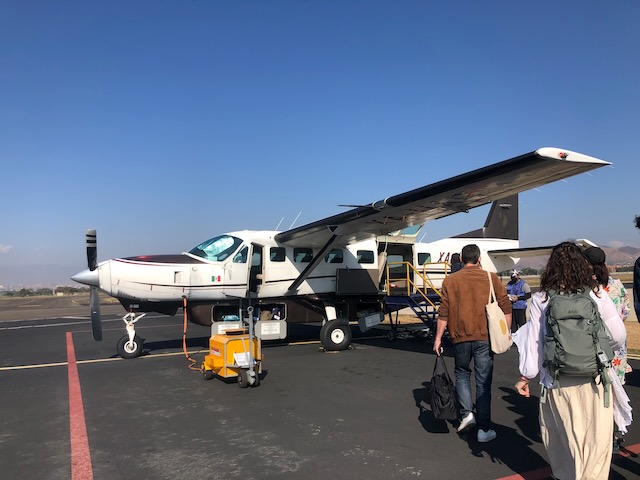
Oaxaca City and Puerto Escondido are only about a six-hour drive apart, so the flight was quite quick and in one of the smallest planes I’ve been in. When I boarded the plane, I was asked to sit up front with the pilot since I was traveling alone. In planes that small, there is often only one pilot. I was nervous at first, but I had ridden in the front of another small plane in Belize and felt quite safe. There’s something about being up front and being able to see where you are going that feels comforting. And on a flight that short, you don’t make it very far up into the air before descending back down. So before I knew it, I had landed in Puerto Escondido, and it wasn’t even 10am. I dropped off my bags at my Airbnb and set out to explore the area.
Puerto Escondido
Puerto Escondido is a small beach town on the Pacific coast of Oaxaca state. The beach is gorgeous, and a popular destination for surfers because it is known for its large waves. That part was a bit unfortunate because the waves made the water too dangerous for swimming. However, I did spend a lot of time that week on the beach and enjoyed many meals at restaurants along the water. The food was delicious – I indulged in a lot of seafood, ceviche, and pina coladas.
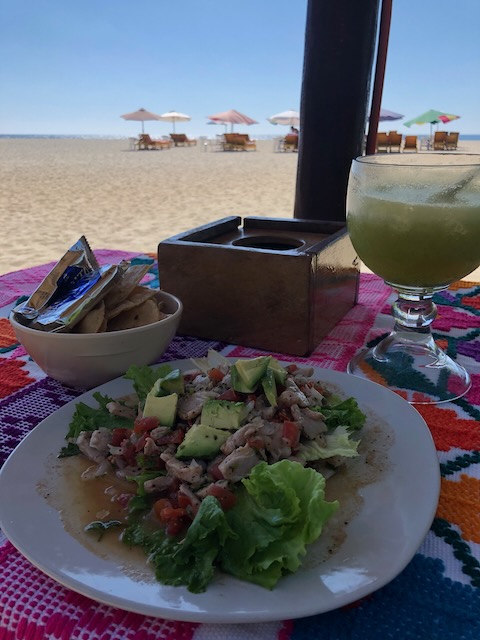
I quickly learned that Puerto Escondido was a party town – there isn’t much to it outside of the beach and night clubs. Wi-Fi and phone service was virtually non-existent, which put a pretty big wrench in my plans to work remotely. I had read that good Wi-Fi was hard to find, so I planned to use my phone’s hotspot as a backup plan, but that was no longer a possibility because I couldn’t get a connection. Luckily, I was able to find a decent co-working space with good internet, but it cost $15 USD per day. My Airbnb was located close to the beach and the nightclubs which sounded good in theory, however, the noise from the nightclubs carried into my room until 4am most nights, and it was impossible to drown out even with earplugs and a white noise machine on full blast. Originally, I wasn’t sure how long I was going to stay in Puerto Escondido and had hoped to stick around for a while since it was near the ocean. But after a week of barely sleeping and paying $75 for internet, I decided it was time to move on and bought a bus ticket to San Cristobal de las Casas, a popular town in the state of Chiapas with a lot of expats.
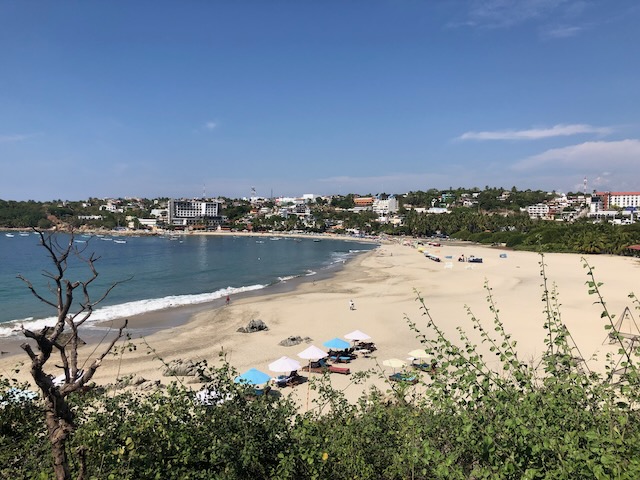
My Airbnb in Puerto Escondido was a cabana located on a local Mexican family’s property, along with another cabana that was rented by another traveler. They offered massage and temazcal on site, so I decided to pamper myself with a spa day before heading to San Cristobal. I had a massage in the morning, and a temazcal ceremony in the evening. Temazcal translates as “house of heat.” A Mayan temazcal is an igloo shaped sweat lodge made of volcanic rock, mud, and cement. In the ancient Maya world, temazcal was used as part of a curative ceremony to purify the body after exertion, or for healing the sick and improving health. I had never tried it before, so I decided to give it a shot. It was a bit awkward to say the least. I was the only person participating that night, and Tacho, the middle-aged Mexican Airbnb host who spoke no English facilitated the experience. He prepared hot coals and heated the sweat lodge, which took about an hour. Once the sweat lodge was good and hot, Tacho told me to undress completely and instructed me to go inside the sweat lodge. I assumed I would be alone, but he entered with me. He had prepared a bucket of hot water with special herbs to cleanse the body and mind, which he ladled over the hot coals so steam filled the sweat lodge. It was hot, steamy, and humid – almost unbearable. After about 10 minutes, he led me outside to a barrel of cold water where he proceeded to dump several buckets of cold water over my naked body. I was not expecting this and was shocked by the icy water. We then returned to the sweat lodge. This back-and-forth process continued for about an hour until the herbal concoction was gone, and I felt weak and faint. Tacho told me to lie down outside under the stars, which I did for about 30 minutes before retiring to my room. It was an odd experience since I was naked, alone, and didn’t know what I was getting into, but I felt simultaneously revitalized and relaxed afterward.
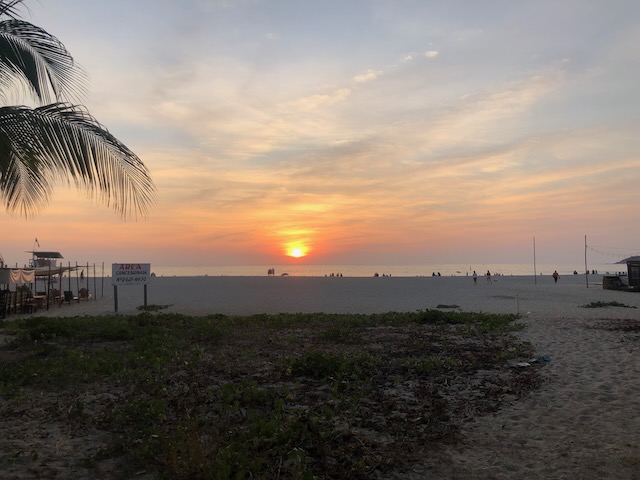
The next day I woke up with stomach cramping and diarrhea from something I had eaten or drank the day before. My bus to San Cristobal left that evening and was a 14-hour overnight ride. There was a bathroom on the bus, but I underestimated how difficult it would be to use the bathroom while the bus was moving, especially with the way they drive in Mexico. Thankfully, I got most of it out of my system before my overnight journey began. I arrived at the bus station about an hour early. I had purchased my seat online but never received the ticket in my email, so I went up to the ticket counter to speak with someone. They didn’t speak any English, and my Spanish was too limited to express what I needed to. I couldn’t use my translation app because I didn’t have phone service. A girl behind me who was bilingual came to my rescue and began to translate for me. The ticket person essentially told me that for security reasons they couldn’t give me my ticket (even though I showed him my passport), and that I had to call an 800 number. That was not possible since I had no phone service, but thankfully the bilingual girl was kind enough to call on her phone and continue to translate for me. We waited and waited and waited and never actually got through to anyone. My bus began to board, and my bilingual angel had to board a different bus, so I was about to lose my translator. I began to panic. We attempted again to talk to the person at the ticket counter to ask if I could buy another ticket, but the bus was full. I didn’t have anywhere to stay that night if I didn’t make it onto my bus, and the last thing I wanted was to be stuck there for another night. I started to cry, and finally the ticket person begrudgingly took my passport and printed a copy of my ticket and handed it to me. I still don’t understand why they couldn’t give me a copy of my own ticket in the first place, but I felt a huge wave of relief once I finally had the ticket in my hand.

